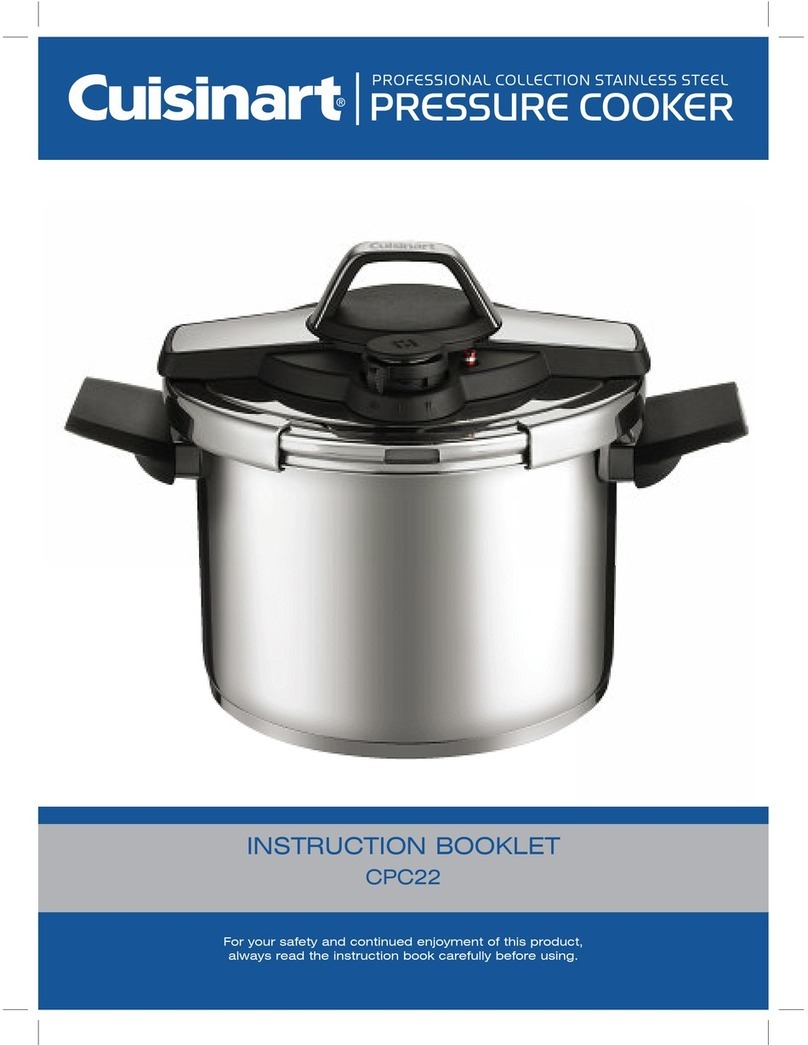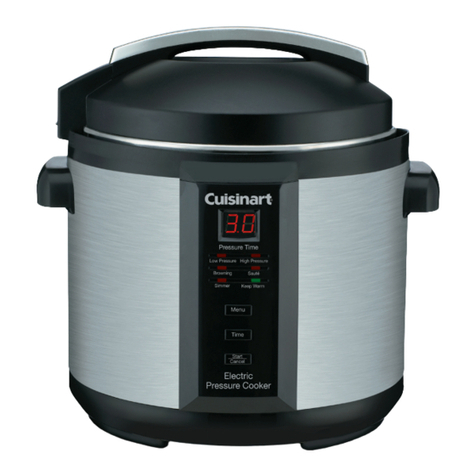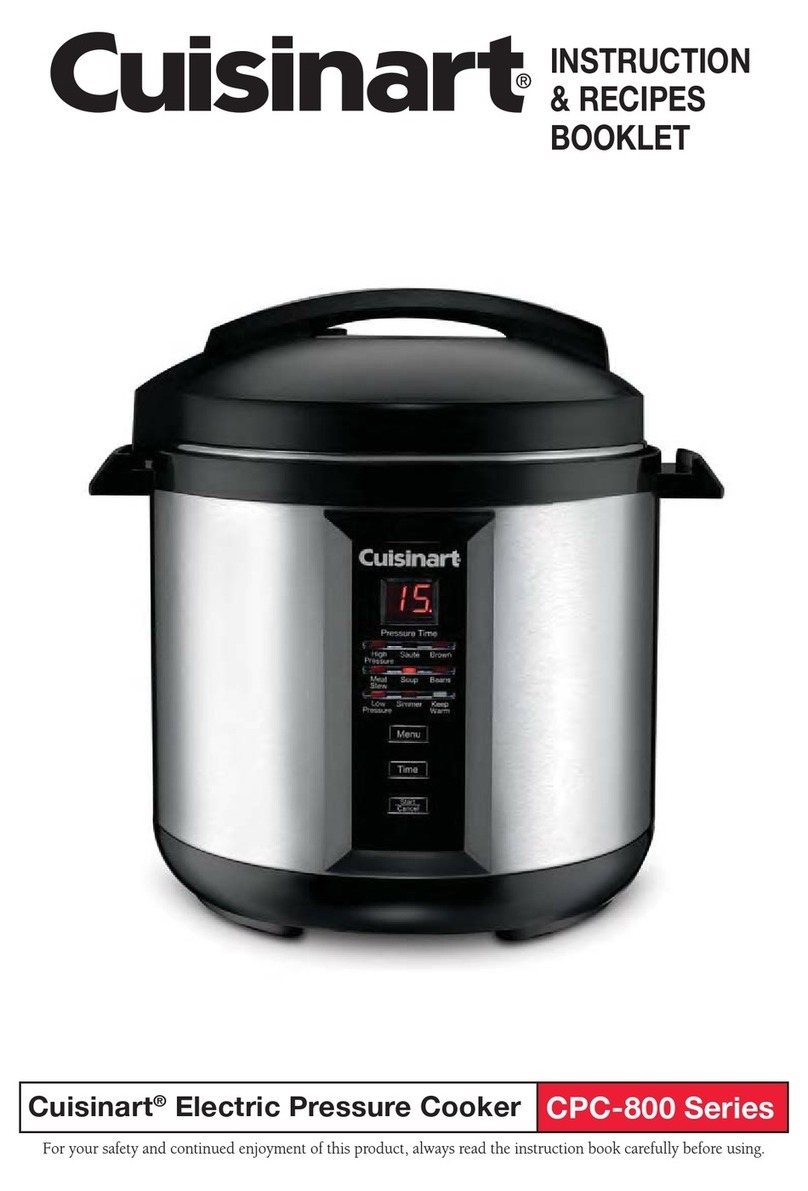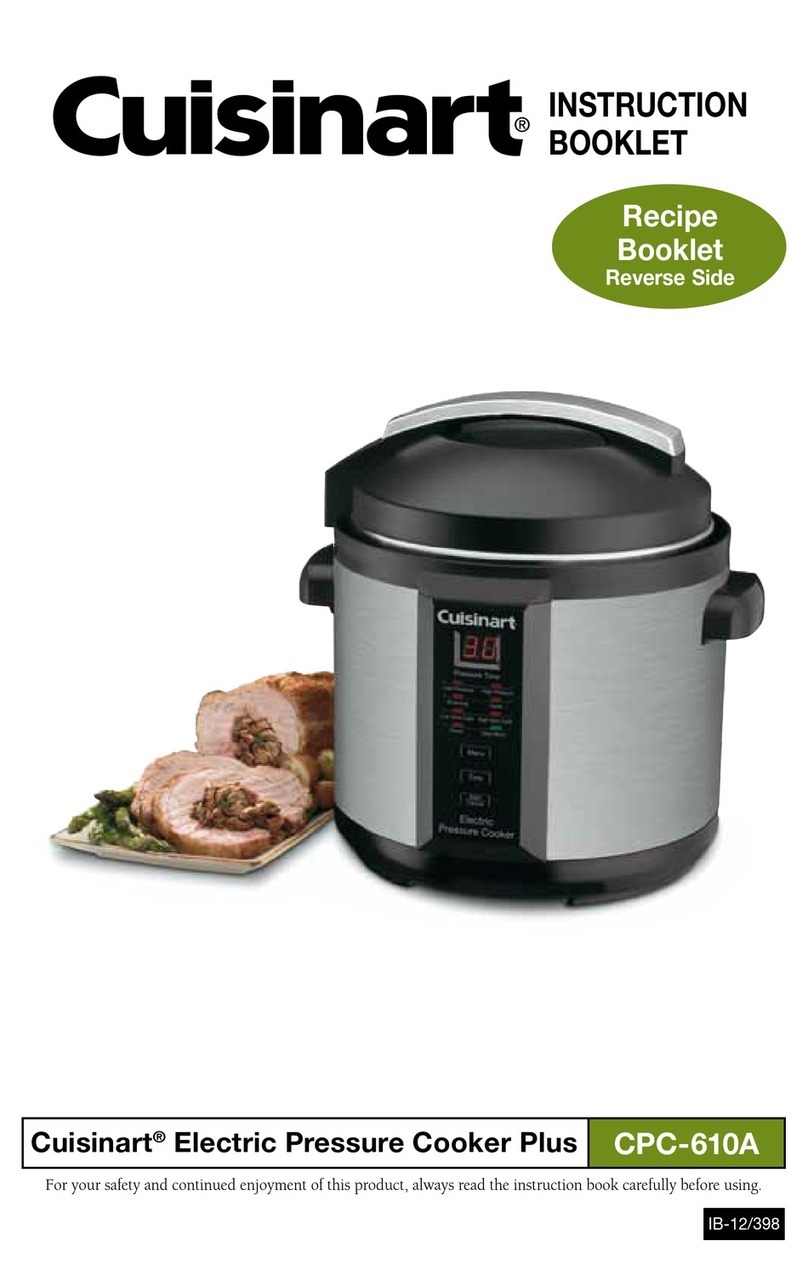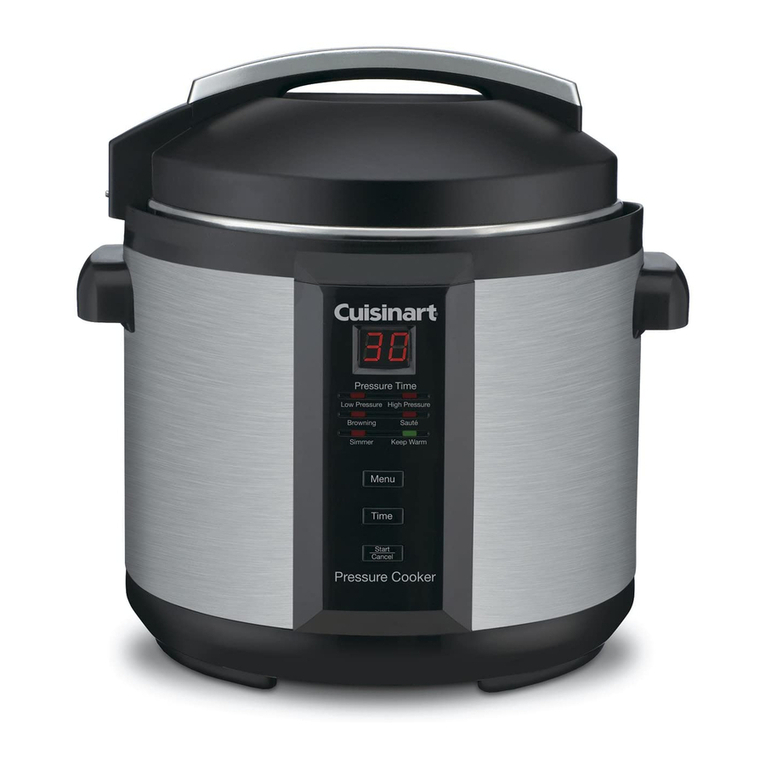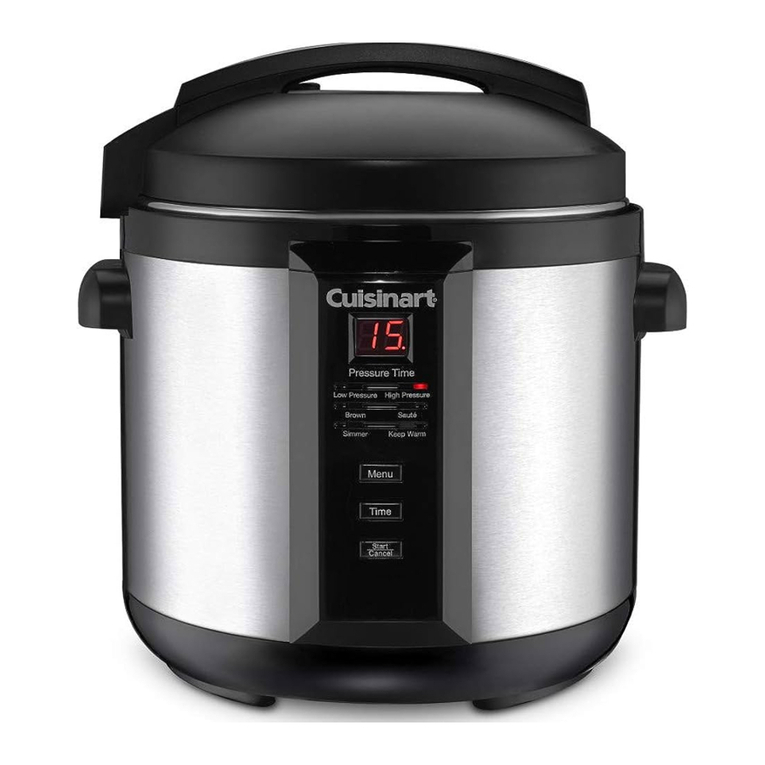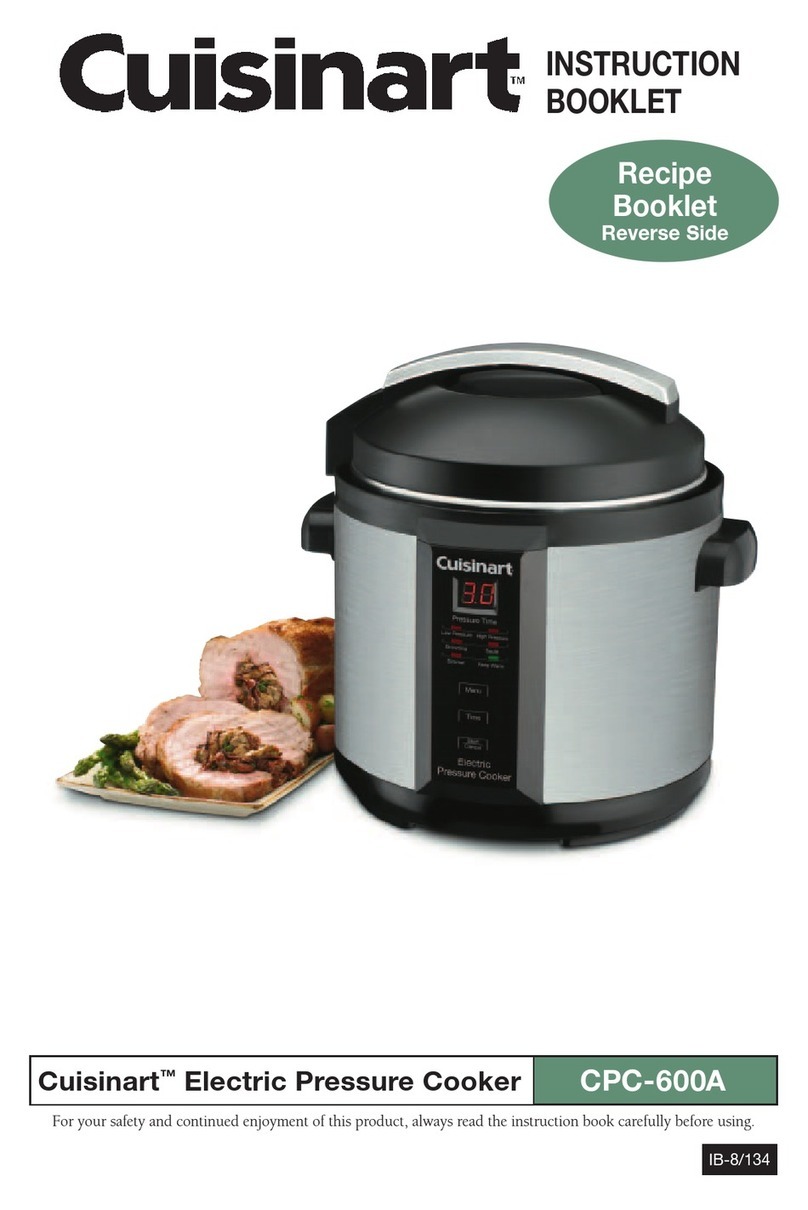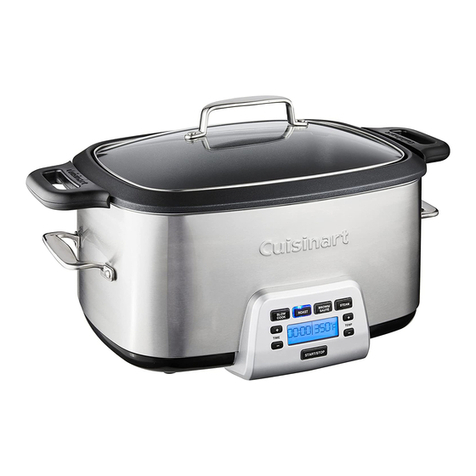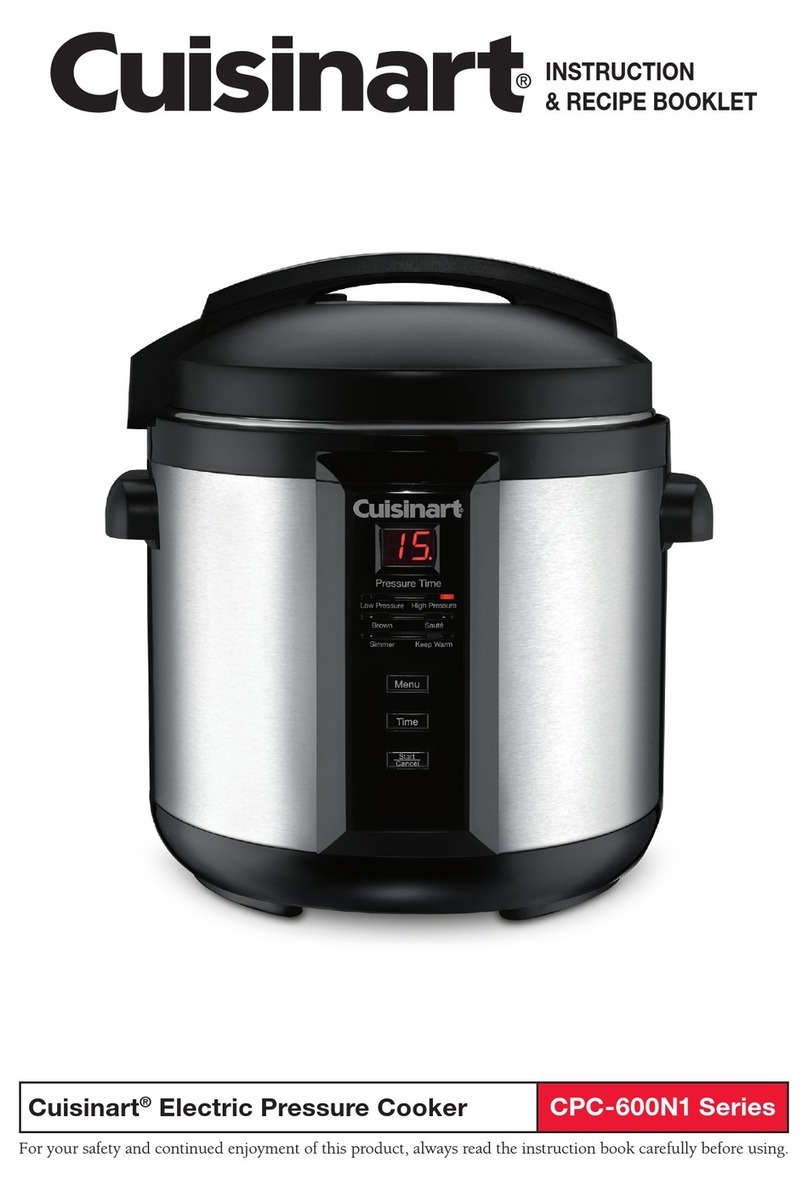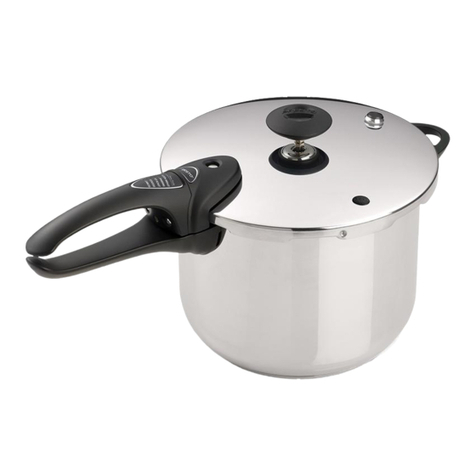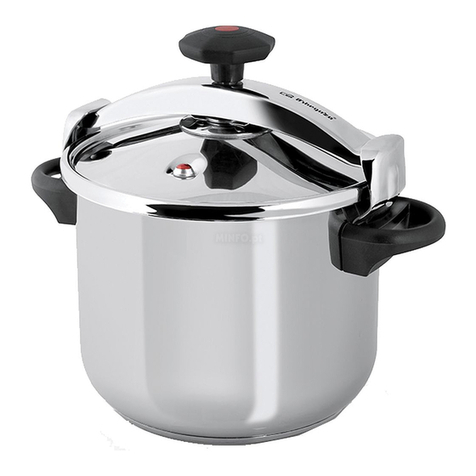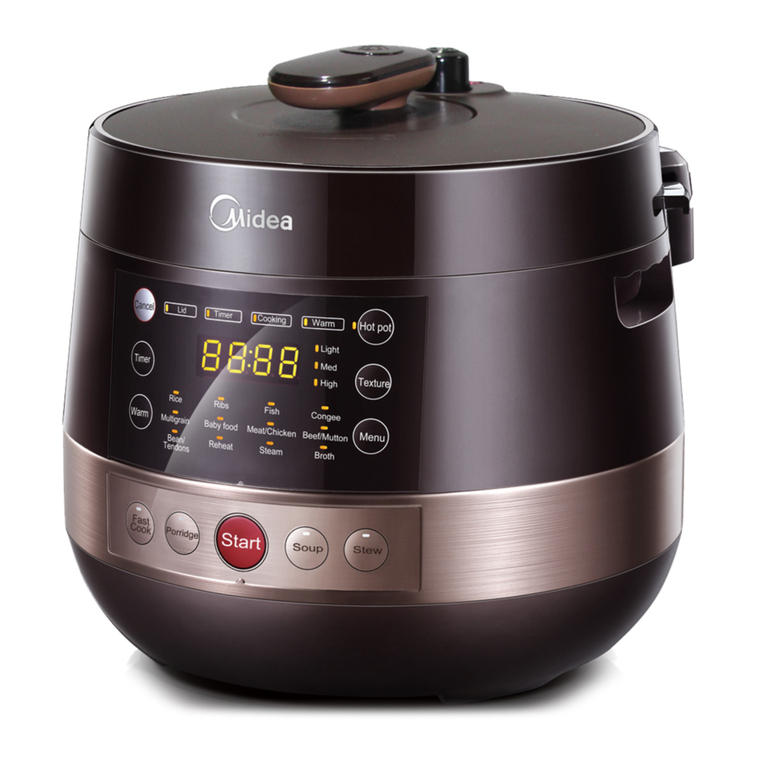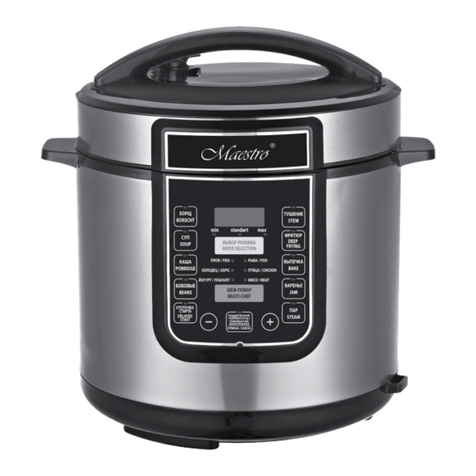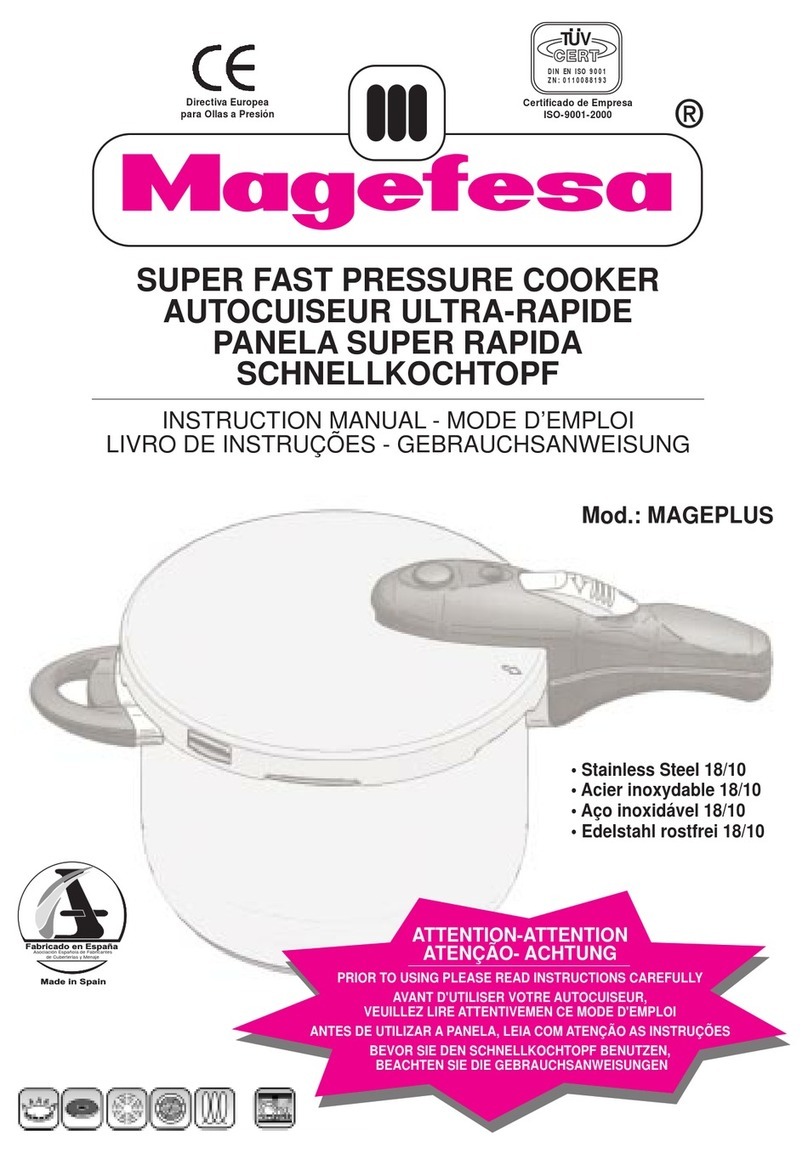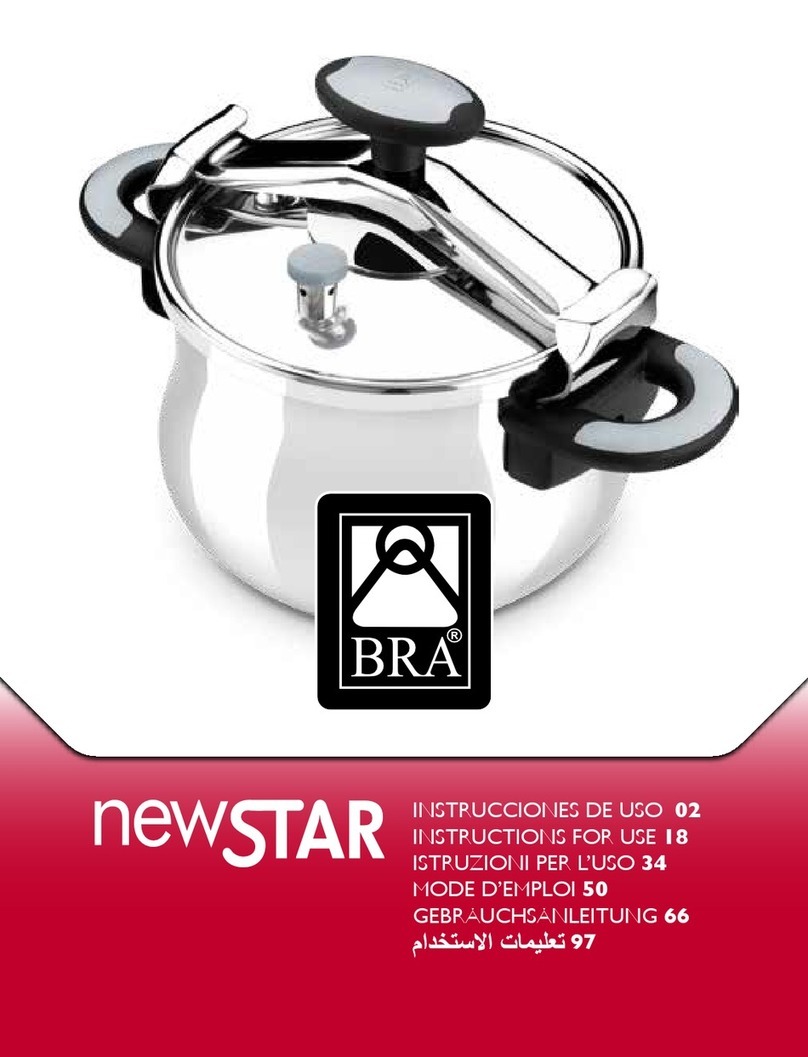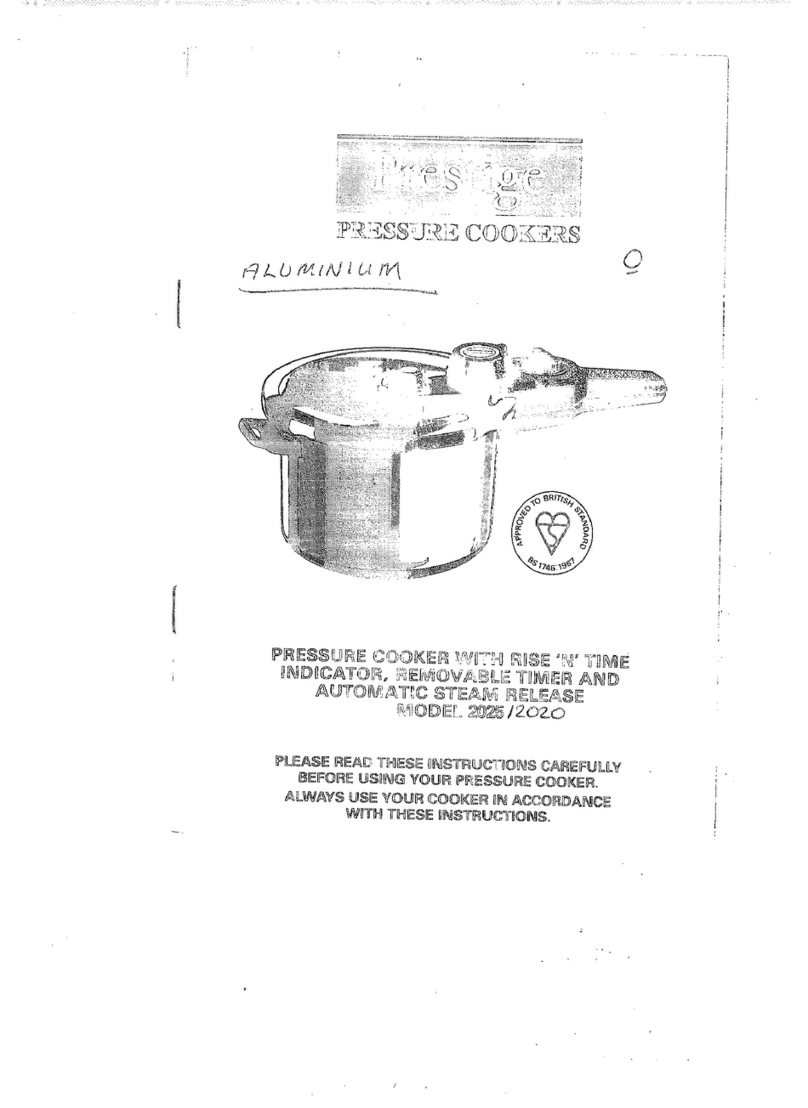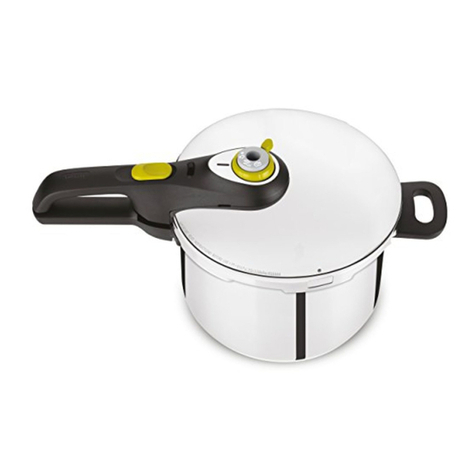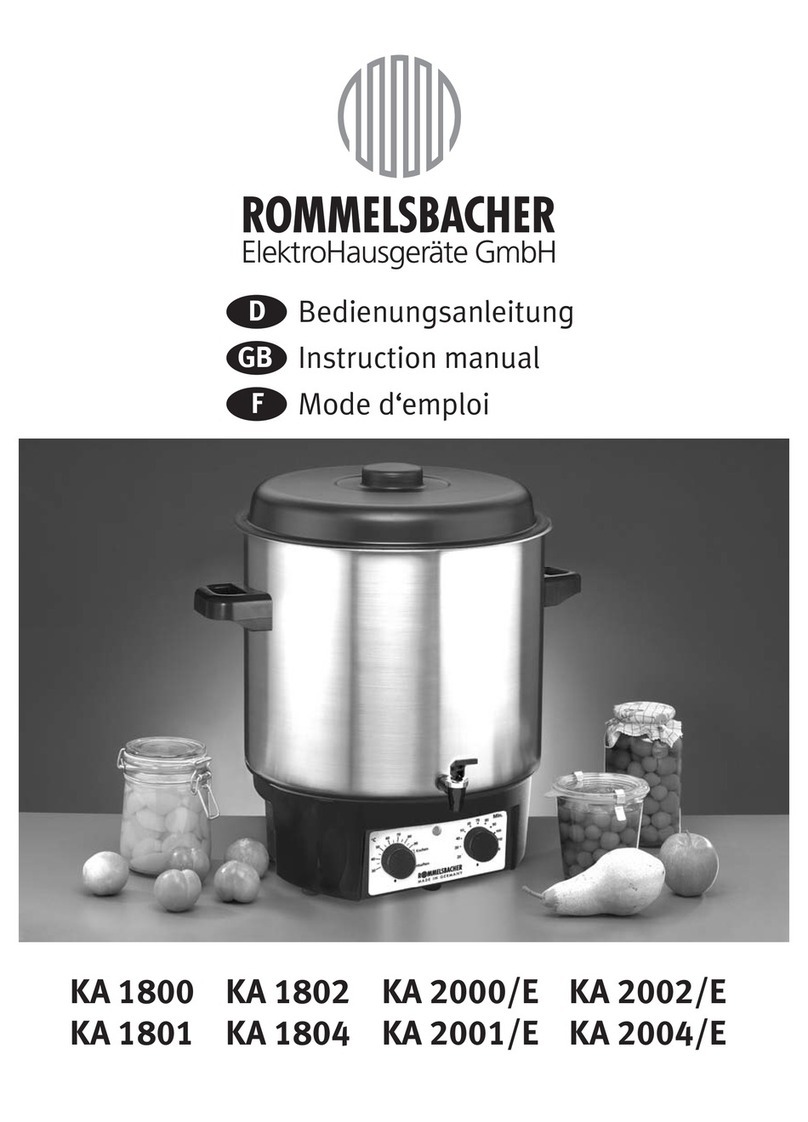
6
If using a pressure function after Brown or Sauté,
press MENU again and select Low or High Pressure
function. Refer to “To Select Low or High Pressure” in
Operating Instructions, Section 1.
3. To Select Simmer
With the cooker on and the LED displayed, press the
MENU button to select Simmer function. The selected
function will flash.
Press the START/CANCEL and the cooker will begin to
heat up. The simmer function will light up and go from
blinking to solid. When simmer is complete, press the
START/CANCEL to end the function.
4. To Select Keep Warm
After pressure cooking, the cooker will automatically
go into Keep Warm function.
With the cooker on and the LED displayed, press the
MENU button to select Keep Warm function. The
selected function light will go from blinking to solid.
Add food and press the START/CANCEL, and cooker
will start to heat up.
5. To Cancel
Press the START/CANCEL button at any time to cancel
current activity or to stop cooker. Unit may still be
under pressure if using pressure cooker setting.
To Remove Lid
When pressure cooking cycle is finished, the unit will
automatically switch to the Keep Warm position. At
this point, you may choose to release pressure in one
of three ways – Natural Pressure Release, Quick
Pressure Release, or a combination of both. The
choice will be dictated by the particular food being
cooked and indications in the recipe. If adapting your
own recipe for pressure cooking, find a similar recipe
in our recipe booklet and use that as a guide.
WARNING: USE EXTREME CAUTION WHEN
RELEASING PRESSURE.
1. Natural Pressure Release – Following pressure
cooking, you will hear a series of beeps indicating
the unit is transitioning to Keep Warm. Pressure
will begin to drop. Time for pressure to drop will
depend on the amount of liquid in the pressure
cooker and the length of time that pressure was
maintained. Natural Pressure Release will take
from 12 to 40 minutes. During this time, cooking
continues, so it is recommended to use Natural
Pressure Release for tougher cuts of meats and
some heartier items. When pressure is fully
released, the red float valve (pressure indicator)
will drop and the lid will be unlocked, allowing
lid to be rotated clockwise to the open icon
and removed.
2. Quick Pressure Release – Following pressure
cooking, you will hear a series of beeps when the
time is up. The unit will then transition to Keep
Warm. For Quick Pressure Release, rotate the
pressure limit valve handle (see figure 8). The
cooker will stay in the Keep Warm mode up to 12
hours, or until START/CANCEL is pressed.
WARNING: When rotating the pressure limit
valve, do not touch it with your hand. Use
tongs or another tool.
Steam will immediately begin to release through
the valve. Keep face and hands
away from steam, as it is released rapidly,
and do not release pressure under hanging
cabinets, which can be damaged by steam. When
pressure is fully released, the red float valve will
drop, indicating lid is unlocked.
Using Quick Pressure Release stops the pressure
cooking immediately after pressure has lowered and
red float valve is dropped. If further cooking is
necessary, the unit may be returned to Pressure,
or the food may be further cooked on the
Simmer setting.
3. Combination Natural Pressure Release and Quick
Pressure Release – For some recipes, a
combination of Natural Pressure Release and
Quick Pressure Release is useful. Allow Natural
Pressure Release for the time indicated in the
recipe (food will continue to cook slightly),
followed by Quick Pressure Release.
WARNING: USE TONGS OR SIMILAR
UTENSIL TO TURN PRESSURE LIMIT
VALVE CLOCKWISE.
When the red float valve is completely down, turn
the lid clockwise and lift to remove.
8.

